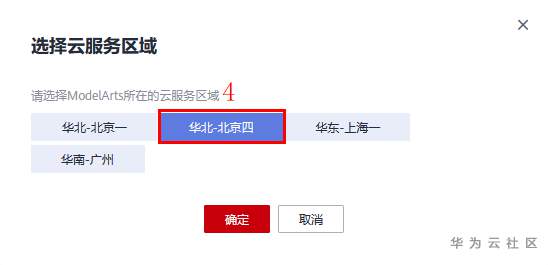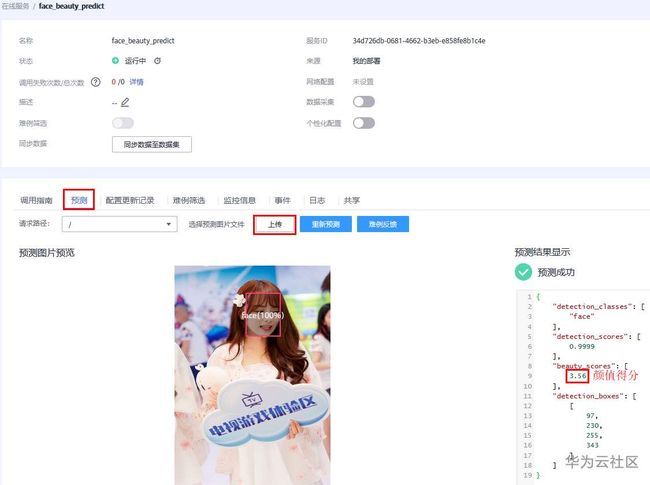谁是ChinaJoy上最漂亮的小姐姐?AI颜值评分神器来帮你
一年一度的游戏视觉盛宴又来了!
作为一个游戏动漫控的肥宅,去CJ现场是必须的。除了看看游戏和动漫,各大游戏展台漂亮的Showgirl也是必不可少的,毕竟没有妹子的CJ就是没有灵魂的CJ,不拍点妹子照片更是等于白来。
逛完展会下来,腿都快走断了,当然,收获是满满的,拍了不少妹子的图,美滋滋地回去了。
回去后和几个好哥们心生一计,咱们要不来PK一下谁拍的妹子最好看?大家一声吆喝,纷纷把手机掏出来,开始凶猛地查找照片。
本肥宅翻了手机里拍的所有照片,选出几张准备和大家PK,结果有一兄弟喷我拍的都是些啥玩意,说我审美不行!忍不了啊,是可忍,叔不可忍,婶婶更不能忍!竟然怀疑我的审美!!!哥差点跟他当场干架!
几个人争来争去,都说自己拍的妹子最好看,好吧,这样争下去是没有结果了……
本肥宅的脑子灵光一闪,说啥咱也是个有技术的人,是不是可以用大数据和AI来搞一个颜值评分器?PK一下到底谁拍的妹子最好看?
AI来打分,看看CJ上哪个Showgirl最漂亮?
说干就干,马上上网查找资料,终于找到一个人脸颜值评分的数据集,总共有2500张男性人脸和2500张女性人脸,由60个人进行人工评分,有数据有标签,那么就可以用该数据集训练一个人脸颜值评分AI模型,技术上来说行得通,行,那就搞起来!
经过2个多小时的“撸力”后,代码写好了,模型ready了,先拿两张CJ的小姐姐照片试一下,看看效果怎样呢?
喔嚯嚯~,左边3.6分,右边3.1和3.3分。
注:评分标准是满分5分,最低1分。数据集提供方有说明,5分和1分是惊世骇俗之颜值,所以数据集中的图片基本上极少能评到5分或1分,绝大多数都是2到4分。
看起来效果还不错哦,符合本肥宅的预期,最重要的是这是模型预测出来的结果,是基于5000张图片和60个人的评价训练得到的模型,完全不带个人的审美偏见。有如此神器在手,简直可以横着走!
我已经开始想象这个神器可以做哪些事情了!/奸笑,比如:
(1)测试一下女盆友(如果你有)化妆前后的颜值变化;
(2)评选出班级里最好看的女生;
(3)跟好友进行颜值PK,比一下谁更帅,谁更漂亮;
(4)把收藏的资源都拿出来,筛选出最好看的女生;
等等。。。
实在是有太多用处了,必须是神器啊!/流口水
这么好的东西,不分享一下实在可惜了,毕竟自己也经常从别人那拿东西,本肥宅也决定大度一把,把代码和模型共享出来。
10分钟速成AI颜值评分神器
先讲一下我是怎么开发这个模型的,其实很简单,就是人脸检测+人脸颜值评分,人脸检测模型一大把,这里就不多说了,至于颜值评分,直接撸一个Resnet50模型,最后加一个Dense(1)层就可以了。
##################################### 来自程序猿视角的分割线 ######################################
我开发这个模型,用的是来自华为云的ModelArts(它是一个在线、开箱即用的AI平台,还有免费的GPU算力,每天不限次数使用,不要太爽!),所以代码是在ipynb中跑的。
主要有四个步骤实现人脸颜值评分:
(1)前提准备
(2)搭建人脸检测模型
(3)搭建人脸评分模型
(4)效果测试
下面开始上代码,所有代码如下,详情请阅读代码注释:
(1)前提准备
安装需要的python模块
1 !pip install torch==1.1.0 torchvision==0.3.0 # 本案例同时需要 tf 和 pytorch 两种框架下载代码和模型
import os
import subprocess
import moxing as mox
print('Downloading datasets and code ...')
if not os.path.exists('face_beauty_predict'):
mox.file.copy('obs://arthur-1/face_beauty_predict/face_beauty_predict.zip', './face_beauty_predict.zip')
p1 = subprocess.run(['unzip face_beauty_predict.zip;rm face_beauty_predict.zip'], stdout=subprocess.PIPE, shell=True, check=True)
print('Download success')(2)搭建人脸检测模型
公开的人脸检测非常多,比如开源的RetinaFace效果就不错,且已经有训练好的模型可以下载使用,执行下面的代码即可完成人脸检测模型的搭建
import os
import sys
sys.path.insert(0, os.path.join(os.getcwd(), './face_beauty_predict/model'))
import torch
import numpy as np
from PIL import Image
from collections import OrderedDict
import torch.backends.cudnn as cudnn
from data import cfg_re50
from layers.functions.prior_box import PriorBox
from utils.nms.py_cpu_nms import py_cpu_nms
from models.retinaface import RetinaFace
from utils.box_utils import decode, decode_landm
cudnn.benchmark = True
class RetinaFaceModel(object):
def __init__(self, model_path):
self.network = 'resnet50'
self.cpu = True
self.confidence_threshold = 0.02
self.top_k = 5000
self.nms_threshold = 0.4
self.keep_top_k = 750
self.save_image = True
self.vis_thres = 0.9
self.device = torch.device("cpu" if self.cpu else "cuda")
print('Loading model from %s' % model_path)
torch.set_grad_enabled(False)
self.model = RetinaFace(cfg=cfg_re50, phase='test')
if self.cpu:
pretrained_dict = torch.load(model_path, map_location='cpu')
else:
pretrained_dict = torch.load(model_path)
state_dict = OrderedDict()
for key, value in pretrained_dict.items():
tmp = key[7:]
state_dict[tmp] = value
self.model.load_state_dict(state_dict, strict=False)
self.model.eval()
self.model = self.model.to(self.device)
print('load model success')
def inference(self, img):
img = np.float32(img)
im_height, im_width, _ = img.shape
scale = torch.Tensor([img.shape[1], img.shape[0], img.shape[1], img.shape[0]])
img -= (104, 117, 123)
img = img.transpose(2, 0, 1)
img = torch.from_numpy(img).unsqueeze(0)
img = img.to(self.device)
scale = scale.to(self.device)
loc, conf, landms = self.model(img) # forward pass
priorbox = PriorBox(cfg_re50, image_size=(im_height, im_width))
priors = priorbox.forward()
priors = priors.to(self.device)
prior_data = priors.data
boxes = decode(loc.data.squeeze(0), prior_data, cfg_re50['variance'])
boxes = boxes * scale
boxes = boxes.cpu().numpy()
scores = conf.squeeze(0).data.cpu().numpy()[:, 1]
landms = decode_landm(landms.data.squeeze(0), prior_data, cfg_re50['variance'])
scale1 = torch.Tensor([img.shape[3], img.shape[2], img.shape[3], img.shape[2],
img.shape[3], img.shape[2], img.shape[3], img.shape[2],
img.shape[3], img.shape[2]])
scale1 = scale1.to(self.device)
landms = landms * scale1
landms = landms.cpu().numpy()
# ignore low scores
inds = np.where(scores > self.confidence_threshold)[0]
boxes = boxes[inds]
landms = landms[inds]
scores = scores[inds]
# keep top-K before NMS
order = scores.argsort()[::-1][:self.top_k]
boxes = boxes[order]
landms = landms[order]
scores = scores[order]
# do NMS
dets = np.hstack((boxes, scores[:, np.newaxis])).astype(np.float32, copy=False)
keep = py_cpu_nms(dets, self.nms_threshold)
dets = dets[keep, :]
landms = landms[keep]
# keep top-K faster NMS
dets = dets[:self.keep_top_k, :]
landms = landms[:self.keep_top_k, :]
dets = np.concatenate((dets, landms), axis=1) # face detection results
detection_classes = []
detection_scores = []
detection_boxes = []
for b in dets:
if b[4] < self.vis_thres:
continue
detection_classes.append('face')
detection_scores.append(round(float(b[4]), 4))
detection_boxes.append([int(b[1]), int(b[0]), int(b[3]), int(b[2])])
return detection_classes, detection_scores, detection_boxes
model_path = r'./face_beauty_predict/model/Resnet50_Final.pth'
retina_face_model = RetinaFaceModel(model_path)(3)搭建人脸评分模型
有个公开的人脸评分数据集是SCUT-FBP5500,里面有人工评分的2500张男性人脸和2500张女性人脸,代码库facial_beauty_prediction提供了基于SCUT-FBP5500数据集训练好的模型,执行如下代码就可以加载模型使用
import cv2
from PIL import Image
from keras.models import load_model
class FaceBeautyModel(object):
def __init__(self, model_path):
print('Loading model from %s' % model_path)
self.img_width = 350
self.img_height = 350
self.channels = 3
self.beauty_model = load_model(model_path) # 直接加载训练好的模型
print('load model success')
def inference(self, img):
img_resize = cv2.resize(img, (self.img_width, self.img_height), cv2.INTER_AREA)
img_resize = img_resize / 255.
img_resize = img_resize.reshape((1,) + img_resize.shape)
pred_result = self.beauty_model.predict(img_resize)
if pred_result is not None:
pred_result = pred_result[0][0]
return pred_result
model_path = r'./face_beauty_predict/model/face_beauty/face_beauty.h5'
face_beauty_model = FaceBeautyModel(model_path)(4)效果测试
img_path = r'./face_beauty_predict/model/test_imgs/1.jpg' # 测试图片路径
src_img = cv2.imread(img_path)
detection_classes, detection_scores, detection_boxes = retina_face_model.inference(src_img)
img_draw = src_img.copy()
if len(detection_boxes) > 0:
for box in detection_boxes:
y1, x1, y2, x2 = int(box[0]), int(box[1]), int(box[2]), int(box[3])
width = x2 - x1
height = y2 - y1
new_x1 = max(int(x1 - 0.5 * width), 0)
new_y1 = max(int(y1 - 0.5 * height), 0)
new_x2 = min(int(x2 + 0.5 * width), src_img.shape[1])
new_y2 = min(int(y2 + 0.2 * height), src_img.shape[0])
pred_result = face_beauty_model.inference(src_img[new_y1:new_y2, new_x1:new_x2])
if pred_result is not None:
cv2.rectangle(img_draw, (x1, y1), (x2, y2), (0, 255, 0), thickness=2) # 显示人脸位置
cv2.putText(img_draw, '%.1f' % pred_result, (x1, y1 - 3), cv2.FONT_HERSHEY_SIMPLEX, 0.6, (0, 255, 0), 2) # 显示颜值评分
else:
print('未检测到人脸')
# 显示图片预测结果
Image.fromarray(img_draw[:,:,::-1])##################################### 来自程序猿视角的分割线 ######################################
到这里,人脸颜值评分的神器就搞定了!想要代码和模型动手一试的兄弟请看下文。
颜值评分神器获取方式:
方式一:获取代码 + 模型
(1) 点此链接下载脚本face_beauty_predict.ipynb;
(2) 参考此链接注册华为云账号(官方教程,需点一下报名),参考此链接创建ModelArts Notebook,点击Notebook页面右上角的Upload按钮,将上一步下载的脚本上传到Notebook中,点击打开face_beauty_predict.ipynb,在新打开的页面中,点击页面顶部的Cell->Run All,即可下载全部代码和模型。
方式二:获取模型
(1) 模型已分享到华为云ModelArts的AI市场,所有人都可以下载,点此链接进入到模型详情页面;
(2) 然后参考下面几张图进行鼠标点击操作,即可完成模型的下载和部署:
同步大概花1分钟左右,可以刷新网页来刷新状态,称为“就绪”状态后,就可以部署模型了
然后按照提示操作,点下一步、提交、返回在线服务列表,看到的状态是部署中,状态变成运行中之后,就可以点击服务名称进去预测了
ModelArts上有个将模型部署成在线服务的功能,部署成功后有一个RESTAPI接口,再集成该API就可以做成一个h5页面啦,我已经做好了一个h5页面,点击下方链接就可以测颜值啦 \(^o^)/~ ,还不快试一下?
(还请温柔一点,没钱买服务器,如果出现卡顿,请平静对待~)
http://cj.modelarts.club/v1/modelarts/ChinaJoy
点击这里→了解更多精彩内容









